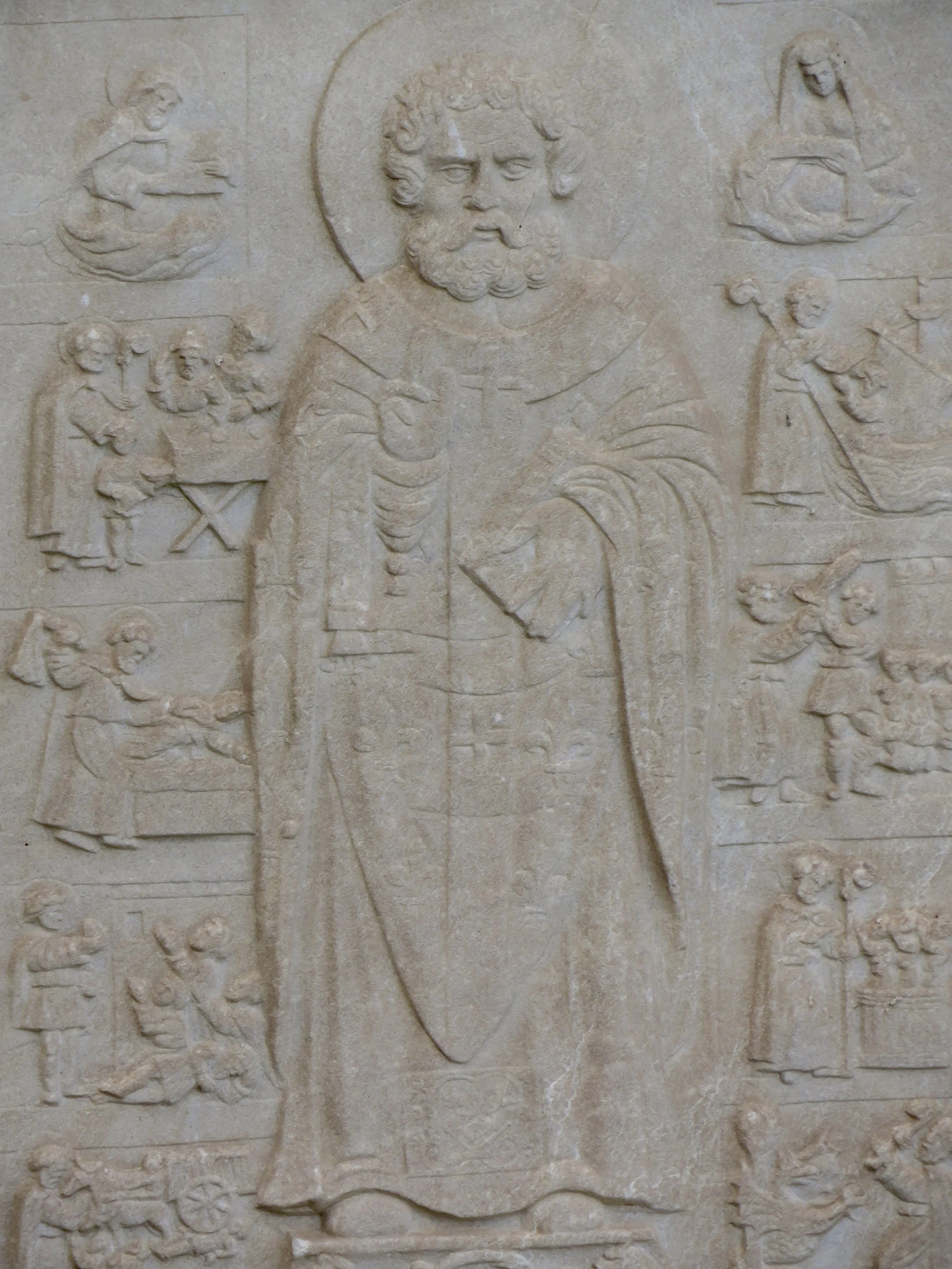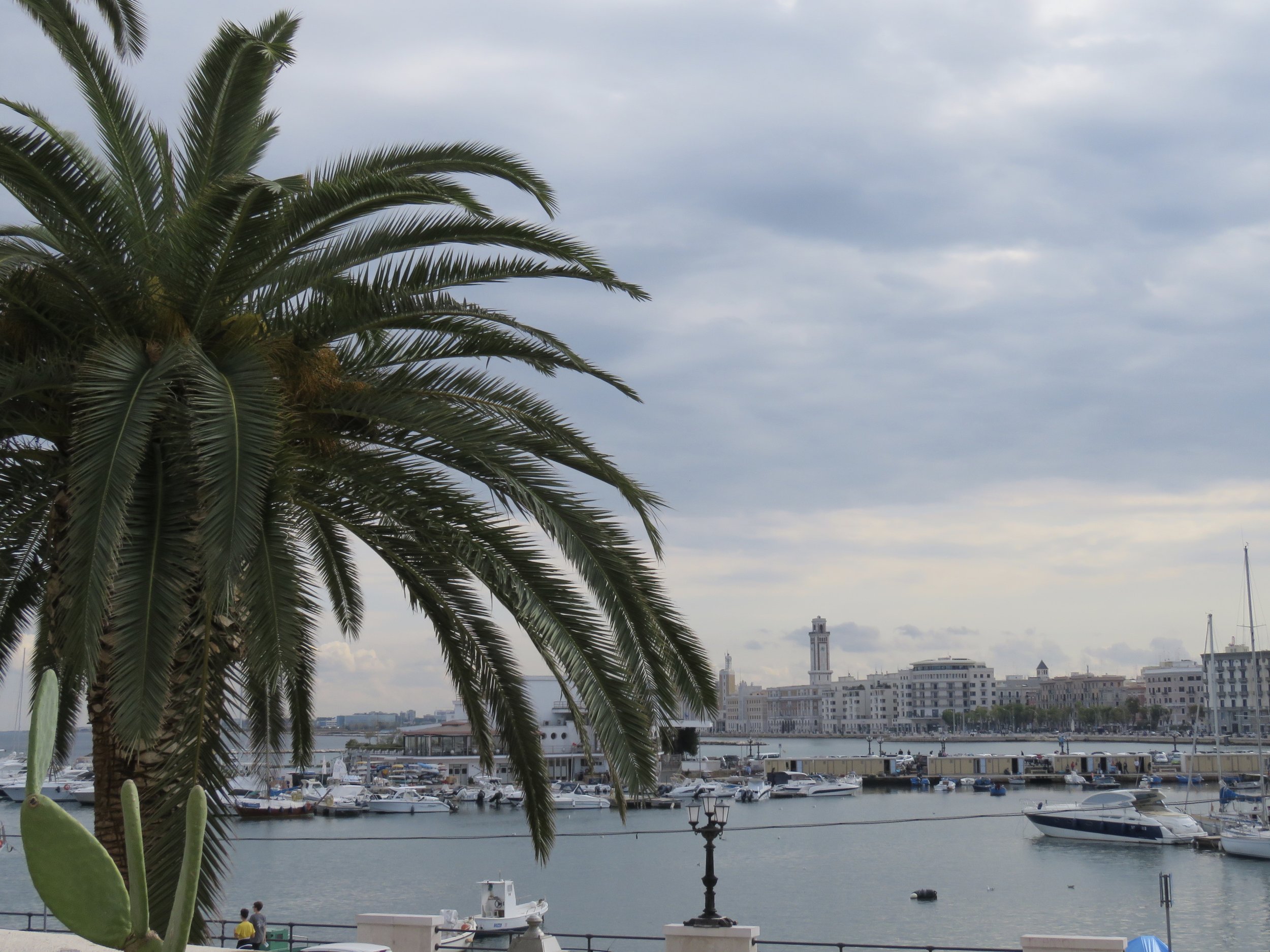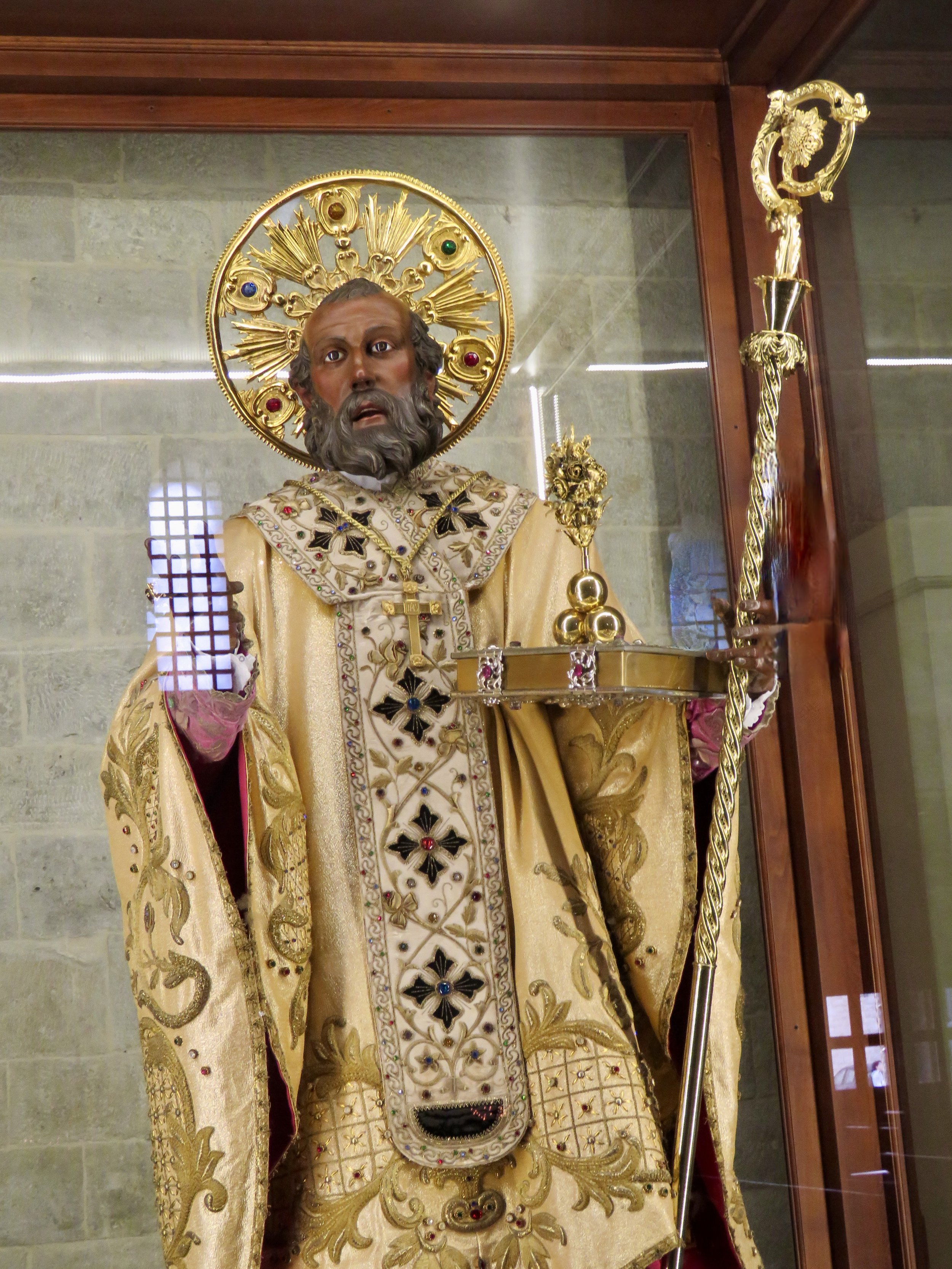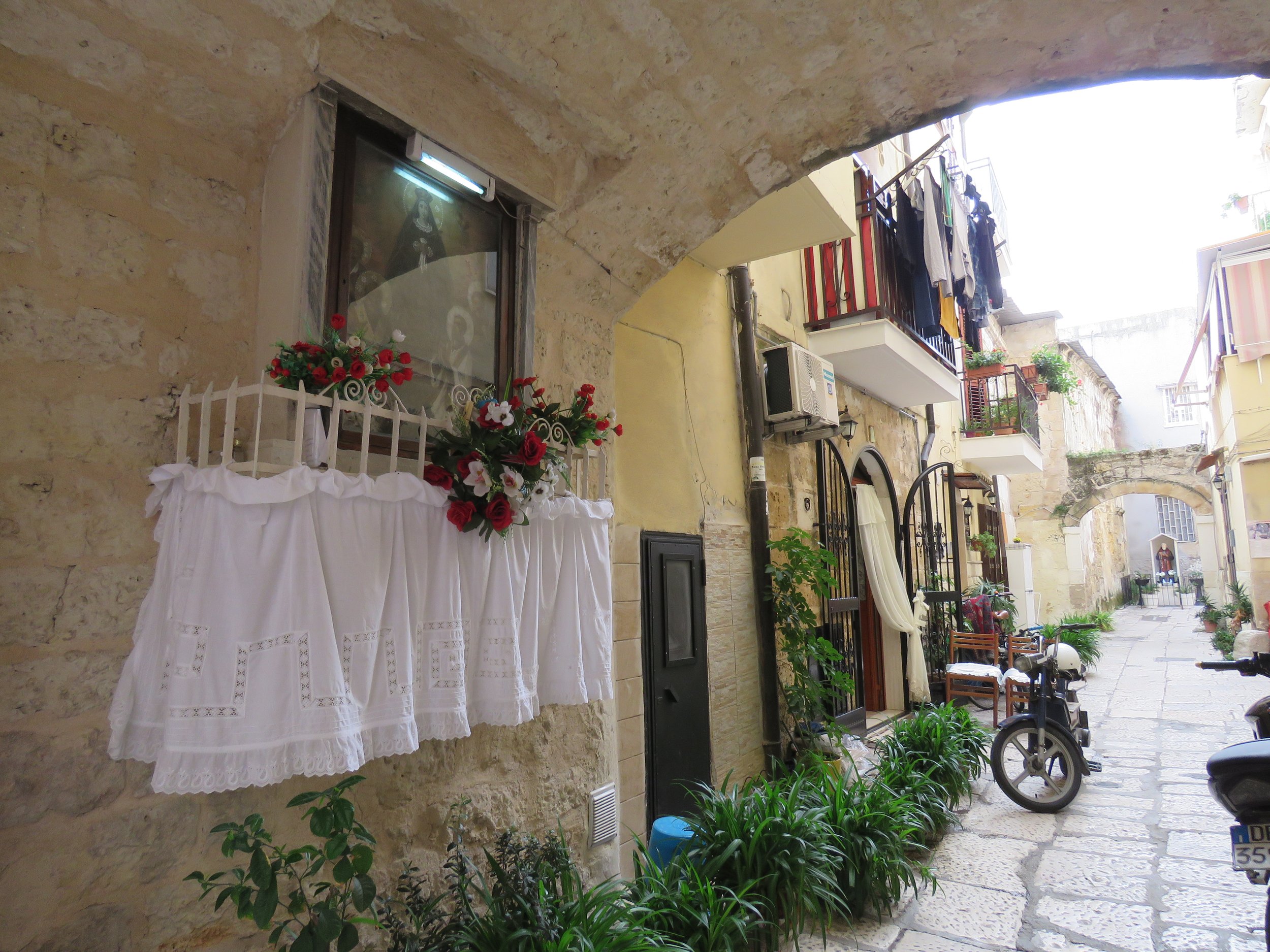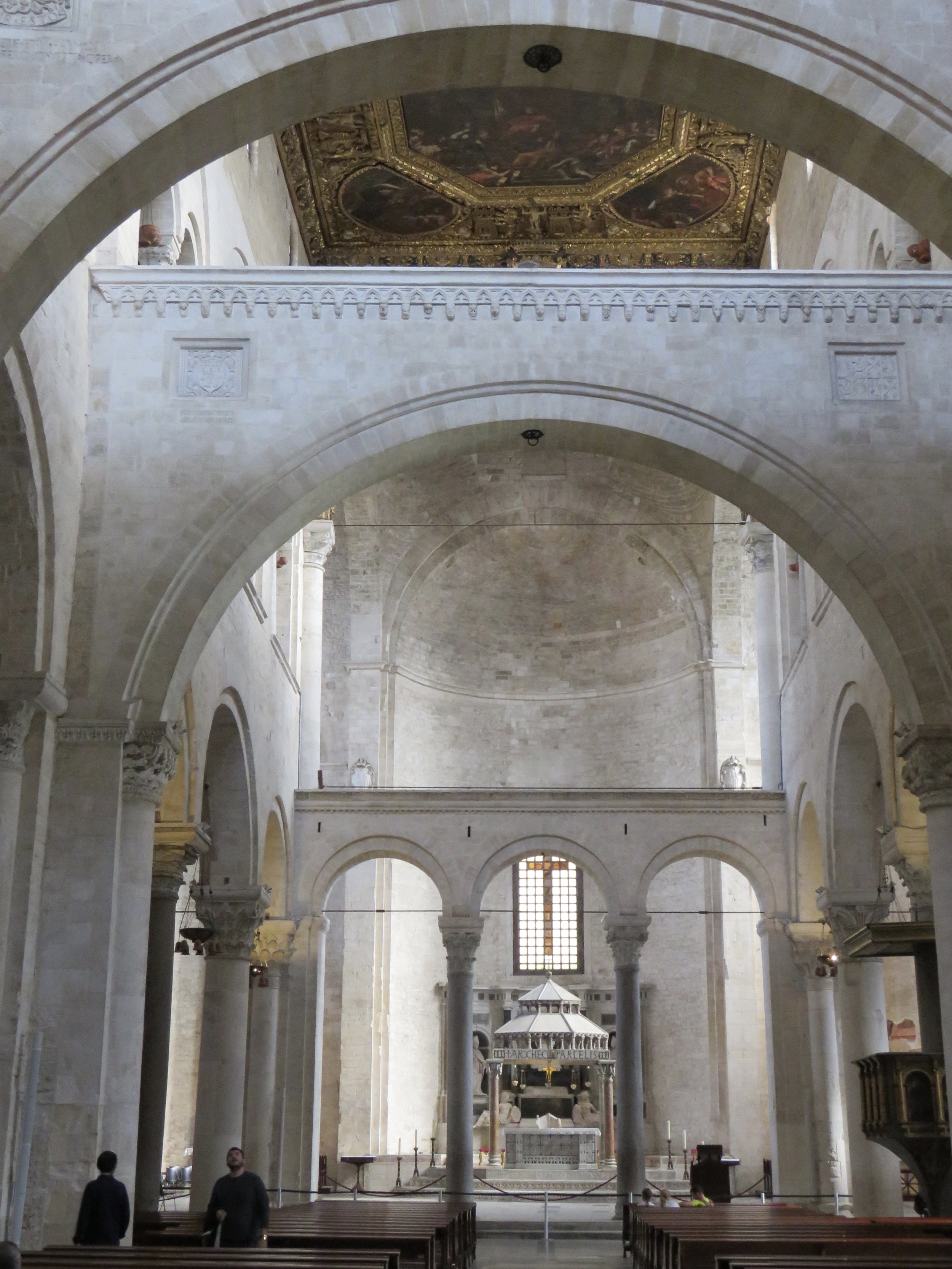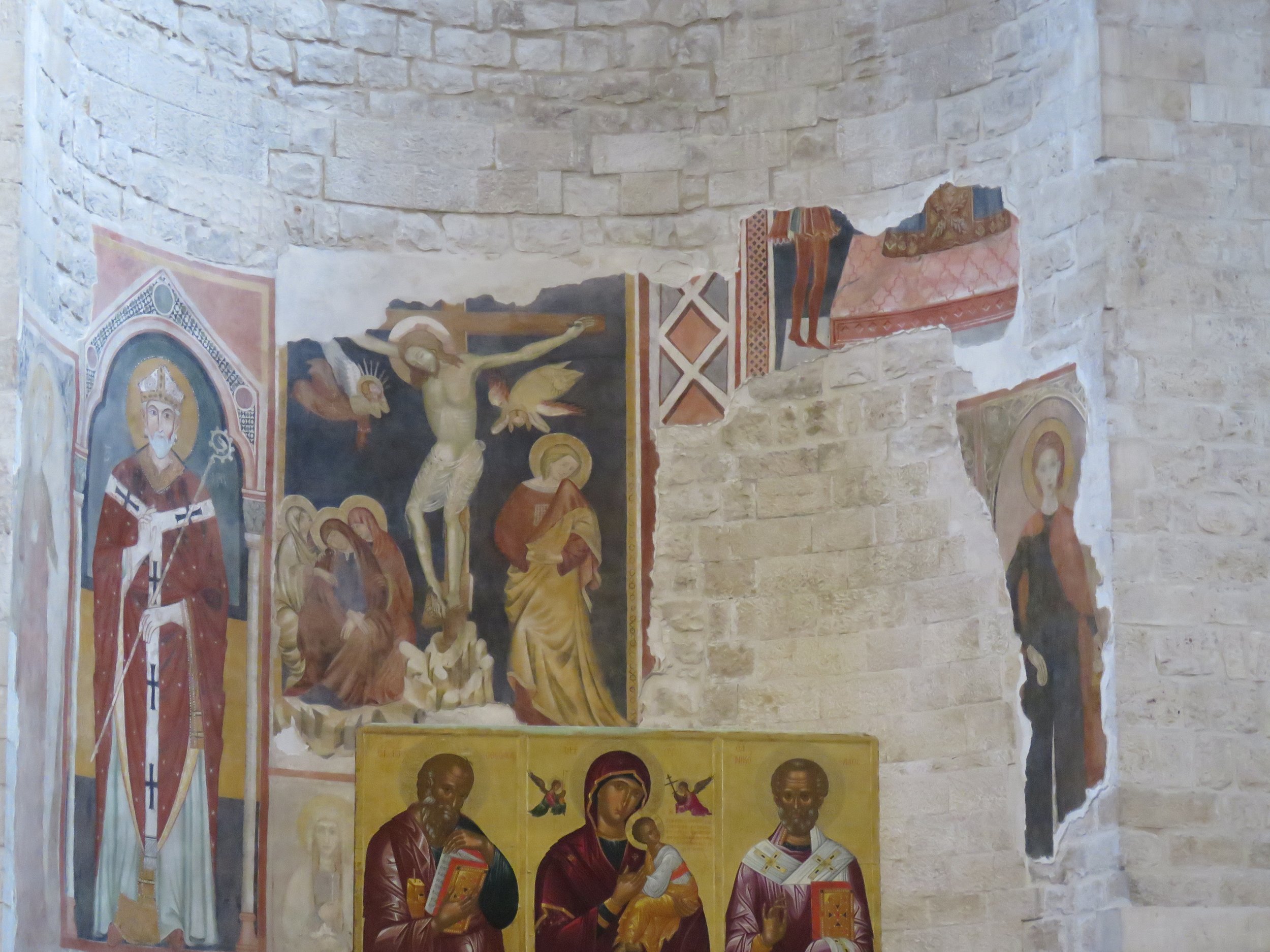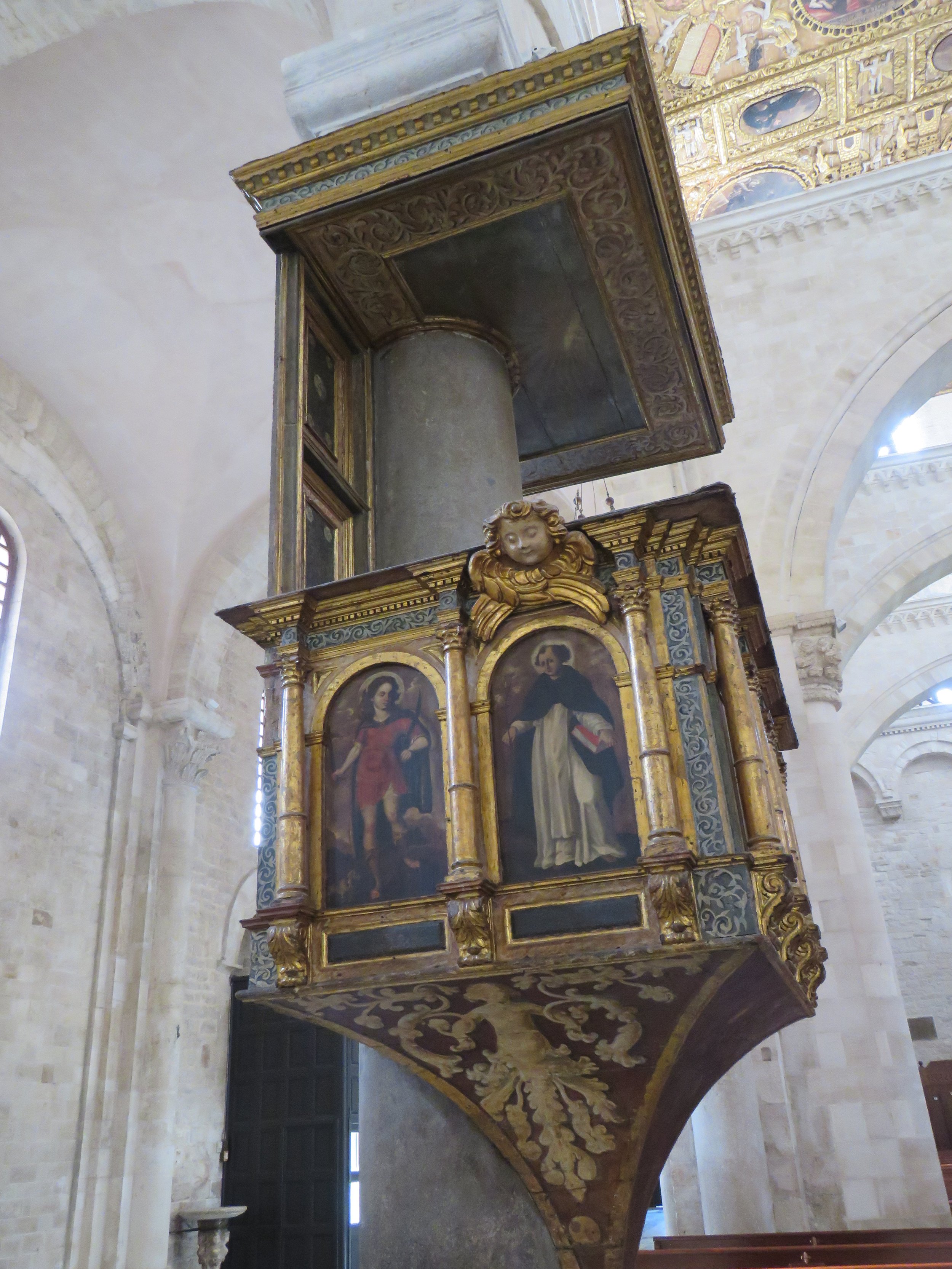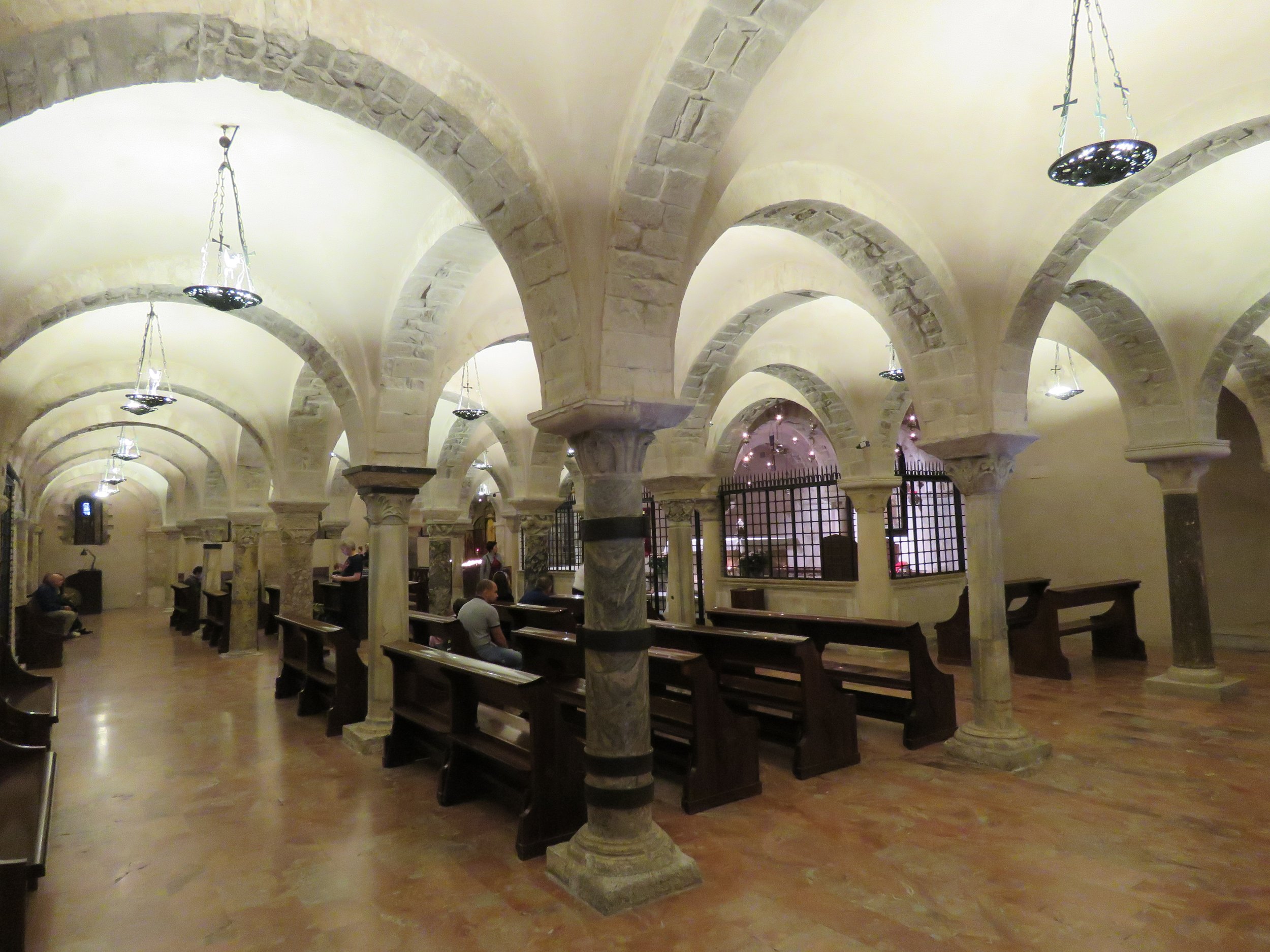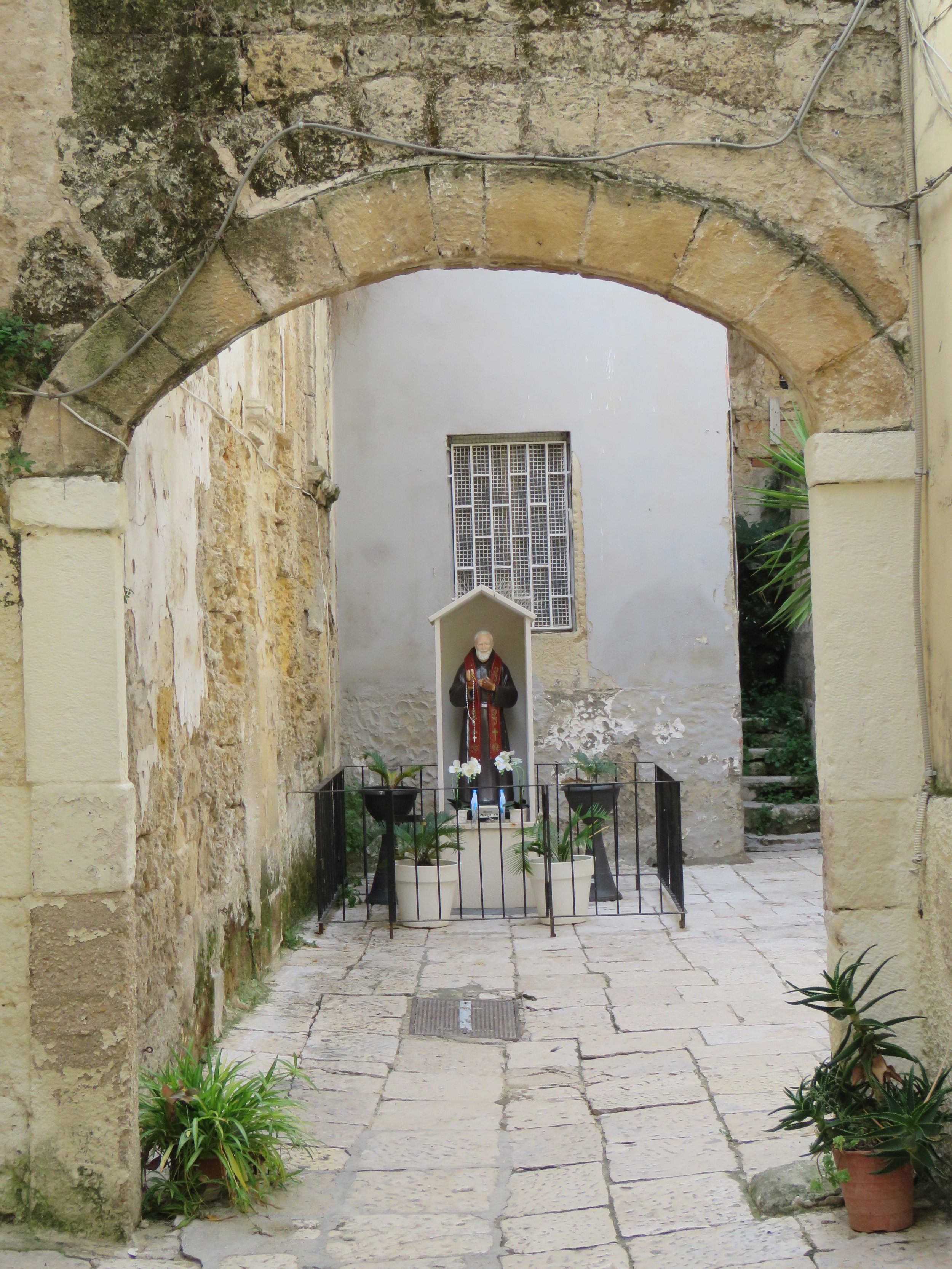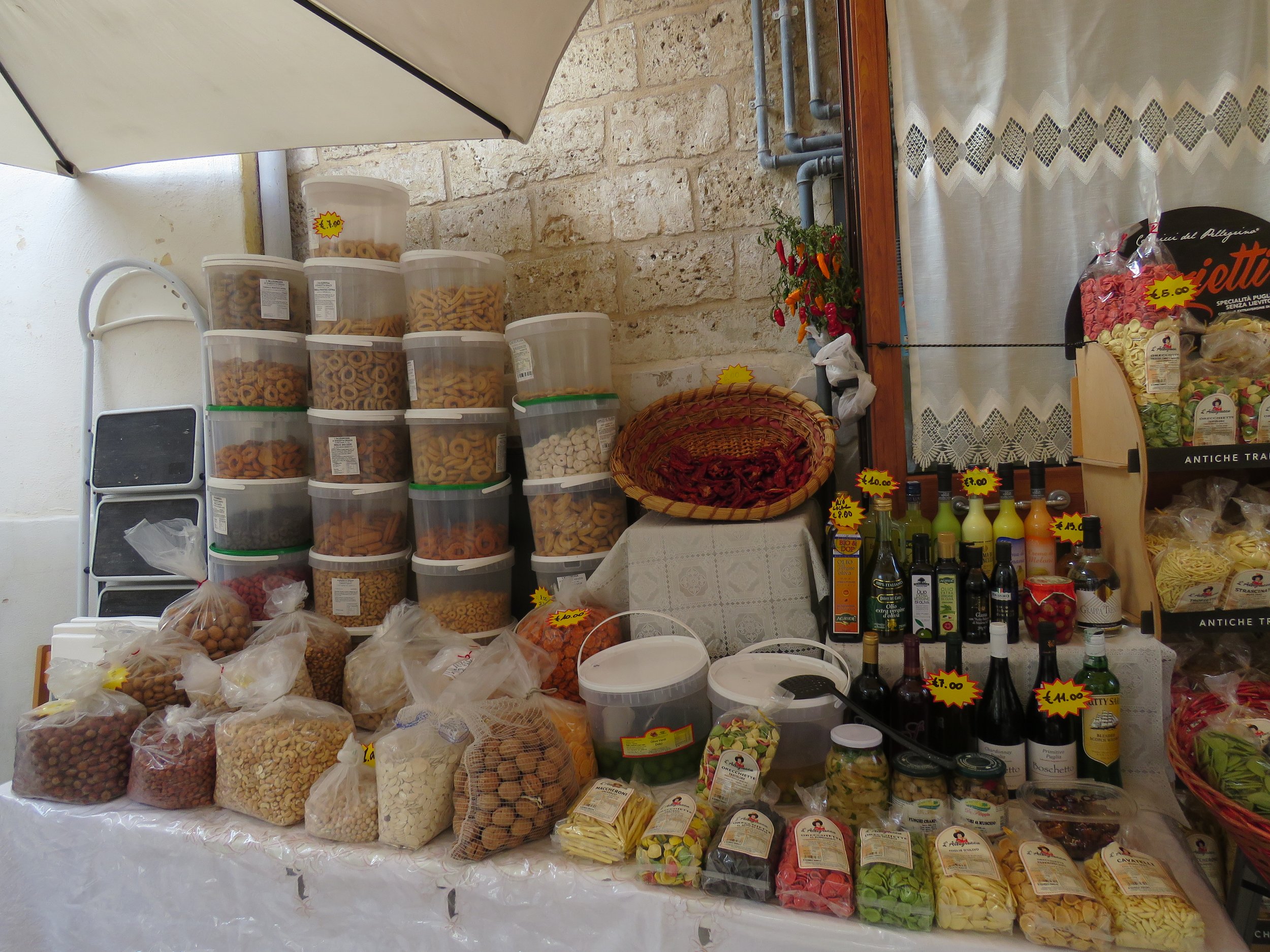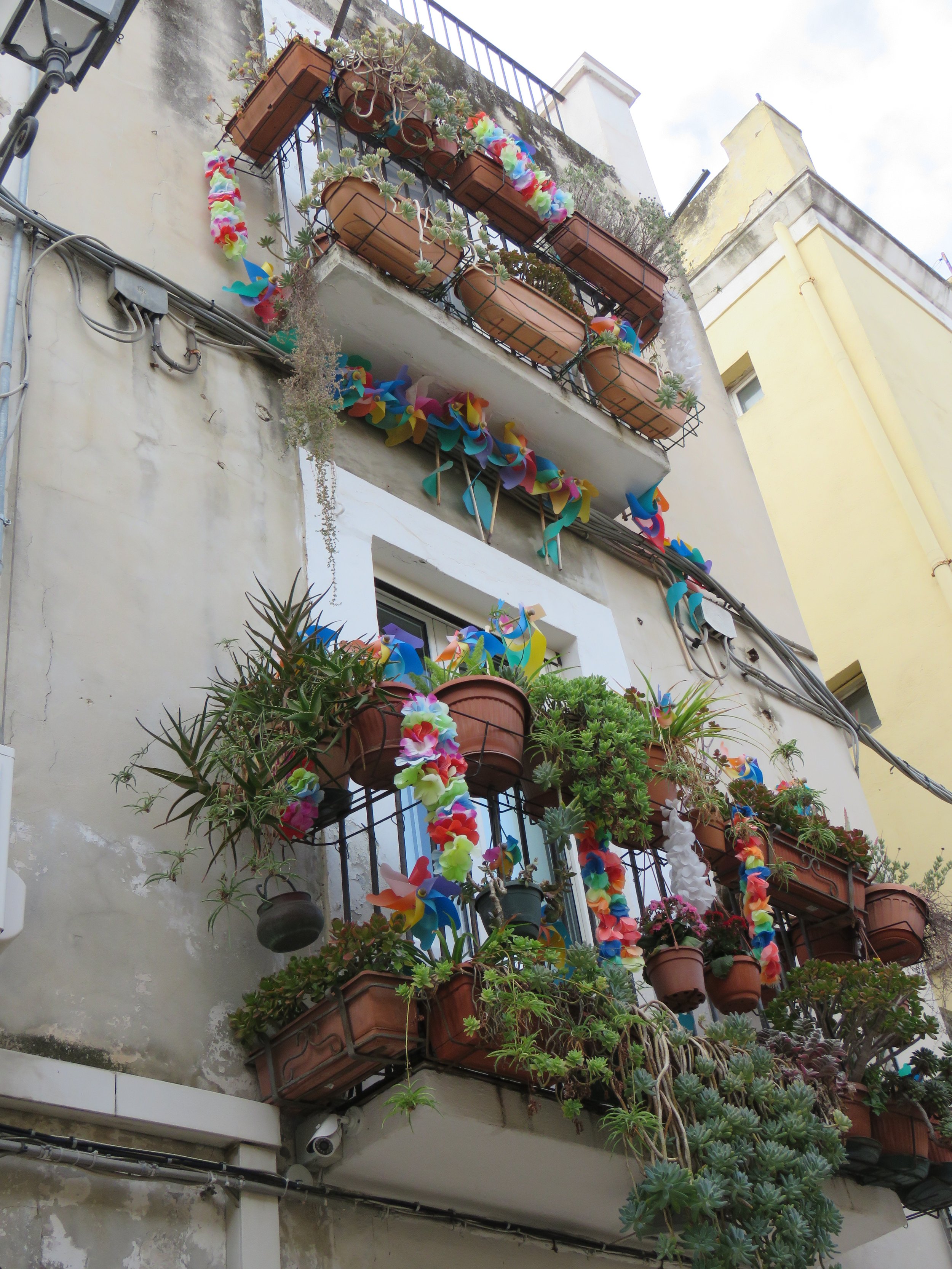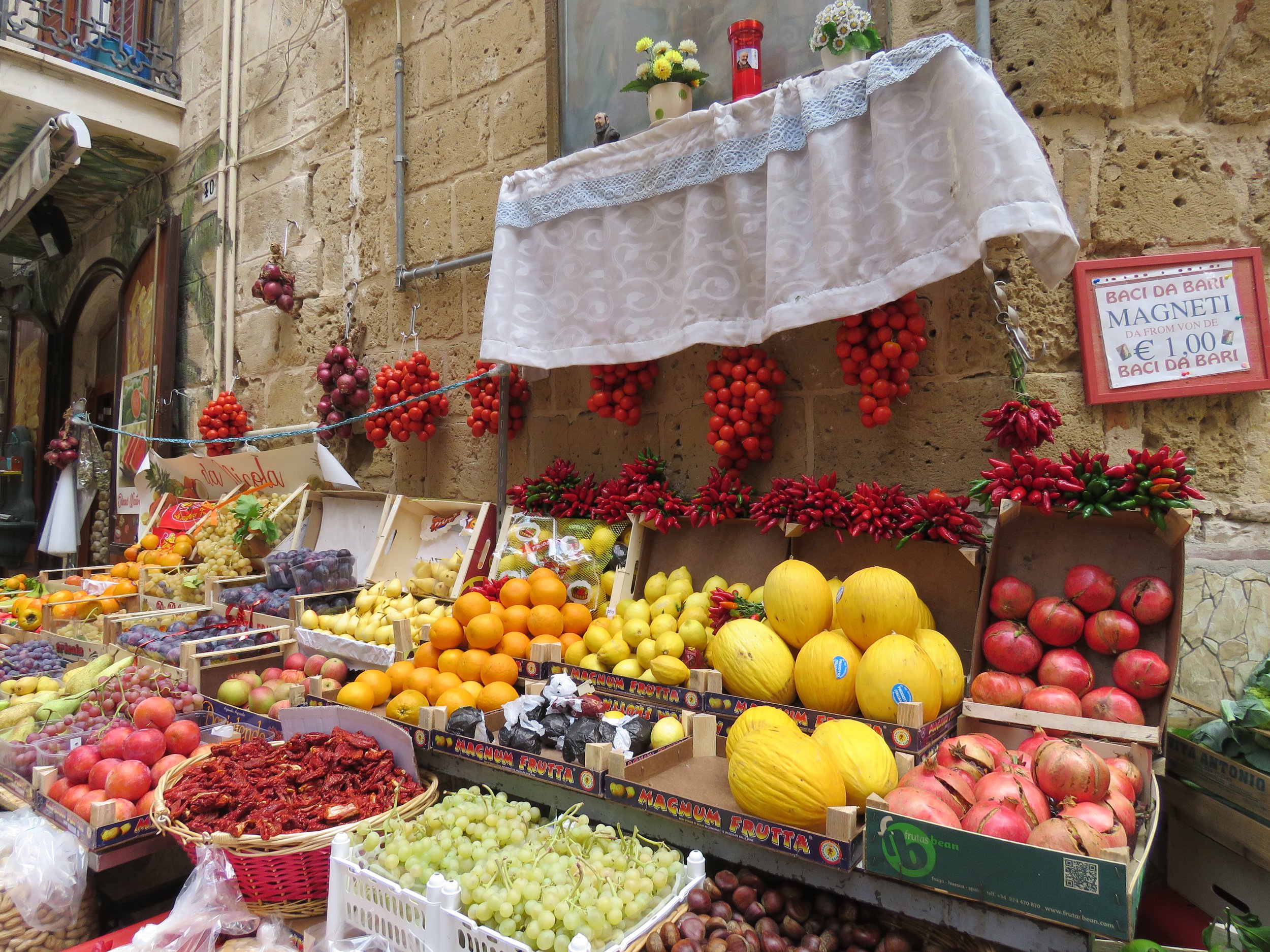Bari, Italy
The reflection looks like St Nick has a cell phone..
Just before Covid hit, in 2019, we explored Italy. As we were planning our trip, mainly to hike the Via Francigena through Tuscany, I was contacted by the Italian publisher who bought the rights to my book Stepping Stones, A Refugee Family’s Journey. The book was coming out in Italian and the publisher proposed a launch in Bari, the city on Italy’s east coast located on the Adriatic Sea. Many refugees have landed here. Pope Francis had selected my book to be included in an IBBY/Bologna Book Fair publication entitled ‘The 200 children’s books from around the world that best illustrate the Pope’s message of humanity to children’. It was to be used in many parishes across the country. What an honor. So I was thrilled to be part of the launch of my book in Italy.
Passi di Pietra
Bari, as it turned out, held even more special meaning for me. I was born and raised in The Netherlands and my favourite day of the year is St. Nicolaas Day. I grew up with the legend of St. Nicolaas. In a nutshell I had always heard that this Catholic bishop was born in Myra, Turkey. I had always been told that he lived in Spain and, on December 5, the eve of his birthday, visited children to bring them gifts.
As I researched this legend, I discovered that he is actually believed to have died, not born, on December 6 in the year 343. His remains, just bones, were taken to Bari and believed to be buried in the Basilica di San Nicholas in Bari. Most likely because Turkey became Muslim and his bones would rest more comfortably in a Catholic country.
During his life, legend has it that St. Nic saved the lives of three young daughters of a destitute man, by giving the family a bag of gold coins and thus preventing the girls from being sold into servitude or worse. After his death, the bishop became a saint - the patron saint of sailors and children.
In The Netherlands many people still celebrate the age old tradition of giving each other gifts on December 5. It is such a fantastic feast for children: I’ll never forget the frenzy of activity and creativity before the date. The saint and his helpers arrive by boat, in many cities, by December 1. From that day on I would set my shoe by the stove and sing out my little heart. The more St. Nicolaas songs I sang, the more goodies might be deposited in my shoe. Traditional candies include pepernoten, tiny cinnamon flavored drops; chocolate letters, and lots of sugar candy. These evenings led up to the big night of December 5. As soon as it got dark, there was excitement in the air. Any moment now there might be loud knocking on the door. Did I spot a white horse riding on the roof tops? Was that Peter, his helper, I saw in the shadows?
As I got older I was initiated into the realization that he no longer existed. But any disappointment by this deception was alleviated by the fact that I would now be part of the making and giving of gifts. And it’s the giving that is most fun.
In my family, even thought we’ve lived in Canada for many years now, we still celebrate this event with vigour. We draw names. Then I have to decide what small, inexpensive gift to get but most importantly - how will I disguise the gift? Unlike Christmas gifts, you can’t just slap a bow and a name tag on it. You need to give this a lot of thought. What has this person done that is funny or special? What can I tease this person with? For instance, my grandson is an avid soccer player. Maybe I’ll make him a paper maché soccer ball and hide his gift inside. Each gift needs to be accompanied by a poem, preferably a long rhyming poem, in which the receiver gets instructions of what to do with his ‘surprise’ (pronounced in French as ‘sur-pree-sah’).
Each person takes turns reading their poem, following the instructions and finding their gift. This can be an evening long process for family and friends, amidst lots of laughter and, of course, eating of traditional cookies and candies.
Bascilica di San Nicholas, Bari
And so I was excited to realize that I was now in Bari, the city of my favourite Saint, accompanied by our new friend and dynamic translator of my book into Italian, Marina. The St. Nicholas Basilica is a beautiful old church. Statues and icons of St. Nic are everywhere. The faithful come to pray at his feet. And down below, in the crypt, is the altar where his bones are said to rest.
Following the narrow alleyways away from the church, we stopped at fruit stalls and marvelled at ornate balconies hung with plants and laundry. We strolled the waterfront along the Adriatic Sea. The night of my Bari book launch I met many people from different countries in Africa who found refuge and a safe haven in Italy.
A modern shrine in an ancient city.
St. Nicolaas’s remains may rest eternally in Bari, but his memory is kept alive by the Dutch. A fairly recent controversy with the traditional celebration is the fact that the bishop’s helper is ‘black Peter’. The servants originally were Moors from northern Africa but in this day and age many people in Holland find it racist to have anyone black be a helper. Other details of the tradition have continued to evolve as well. In the 1700’s Dutch sailors and emigrants brought St. Nicolaas along to the Americas. Slowly things changed… Black Peter helpers turned into elves. The white horse became a sleigh while rooftops stayed on as their preferred travel terrain. The original gold coins with which St. Nicolaas of Myra saved the lives of some children, became immortal as gold chocolate coins in a net. The shoe made way for the stocking. When Coca Cola got their hands on the image of St. Nicolaas, the somber bishop got turned into jolly St. Nick and his celebration date was changed, for convenience sake, from December 6 to December 25. St. Nicolaas, of course, had nothing to do with the birth of Jesus and Christmas. It’s too bad that the tradition of creating elaborate surprises has not made the track across the ocean. But in our family we will be hiding gifts, cutting and gluing, giggling and writing poems until we have our gift exchange on December 5. Happy Saint Nicolaas Day!
